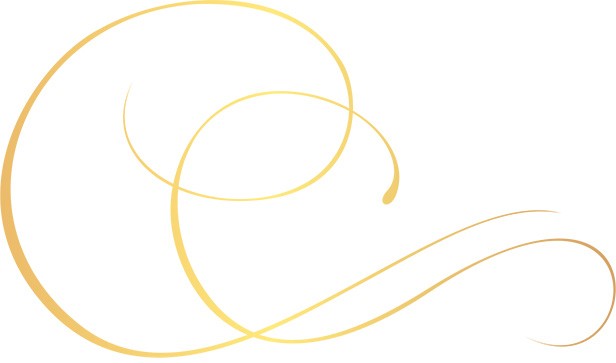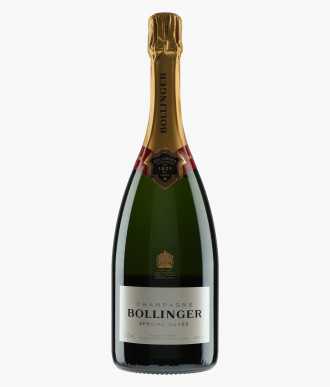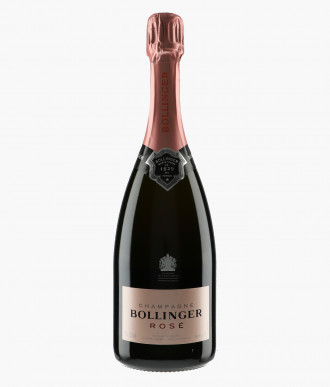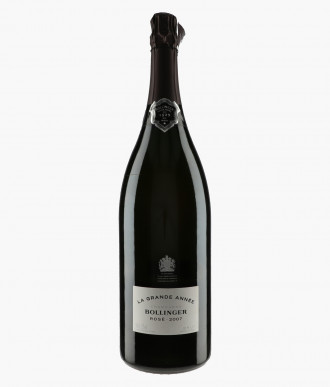-
MenuBack
-
Our Wines
-
-
-
-
Colors
-
-
-
GIFT CARDS
-
-
Offers
-
-
-
Wine Estates
-
BOURGOGNE
-
-
Titre bourgogne
- A
- A & P DE VILLAINE
- ALADAME STEPHANE
- AMIOT ET FILS
- AMIOT LEON
- ARLAUD
- ARLOT
- ARNOUX ROBERT
- ARNOUX-LACHAUX
- AUDOIN
- B
- BACHELET AURORE
- BACHELET JEAN-CLAUDE
- BACHELET-MONNOT
- BACHEY-LEGROS
- BAILLOT ARNAUD
- BAILLOT VAN CANNEYT LAURE
- BALLAND-CURTET
- BALLOT-MILLOT
- BART
- BAVARD JACQUES
- BELLENE ROCK
- BELLEVILLE
- BERLANCOURT ADRIEN
- BERTAGNA
- BERTHEAU FRANCOIS
- BERTHELEMOT
- BILLAUD-SIMON
- BINAUME
- BLAIN MARC-ANTONIN
- BOCCON THOMAS
- BOIGELOT ERIC
- BOILLOT HENRI
- BOILLOT JEAN-MARC
- BOISSET JEAN-CLAUDE
- BOISSON ANNE
- BOISSON PIERRE
- BONGRAN
- BONNEAU DU MARTRAY
- BORGEOT
- BOUCHARD AINE
- BOUCHARD PERE & FILS
- BOULEY PIERRICK
- BOUVIER RENE
- BOUZEREAU MICHEL
- BRASSERIE DE FLAVIGNY
- BROTHER & SISTER DRINKS
- BURGUET NICOLAS
- BZIKOT PERE & FILS
- C
- CACHEUX JACQUES
- CAMUS
- CAPITAIN-CAGNEROT
- CATHIARD SYLVAIN
- CELLIER AUX MOINES
- CHABLISIENNE
- CHAMPY BORIS
- CHARTON VINCENT & JEAN-PIERRE
- CHATEAU DE LA TOUR
- CHATEAU DE MARSANNAY
- CHATEAU DE MEURSAULT
- CHATEAU DE RULLY
- CHAVY ALAIN
- CHAVY JEAN-LOUIS
- CHAVY PAUL
- CHEURLIN NOELLAT Maxime
- CHEVILLON ROBERT
- CHEZEAUX JEROME
- CHÂTEAU DE CHAMIREY
- CLAIR BRUNO
- CLERGET CHRISTIAN
- CLERGET YVON
- CLOS DE LA CHAPELLE
- CLOS DE TART
- CLOS DU MOULIN AUX MOINES
- CLOS SAINT JOSEPH
- CLUSEL-ROCH
- COCHE FABIEN
- COCHE-DURY
- COFFINET-DUVERNAY
- COLIN BRUNO
- COLIN JOSEPH
- COLIN MARC
- COLIN SIMON
- COLIN-MOREY PIERRE-YVES
- COLLOTTE
- COMTE SENARD
- COMTES LAFON
- CONFURON JEAN-JACQUES
- COQUARD LOISON FLEUROT
- COSNIER ANTONIN
- COTTENCEAU MAXIME
- COUNT LIGER-BELAIR
- CROIX
- D
- DAMOY PIERRE
- DAMPT
- DANCER THEO
- DANCER VINCENT
- DAUVISSAT JEAN & FILS
- DAUVISSAT RENE & VINCENT
- DE MONTILLE
- DE SUREMAIN ERIC
- DE VOGÜE
- DEFAIX BERNARD
- DELAGRANGE HENRI
- DIDON
- DOMAINE CAMILLE THIRIET
- DOMAINE DE LA CRAS
- DROIN JEAN PAUL & BENOIT
- DROUHIN JOSEPH
- DROUHIN-VAUDON
- DUBUET-BOILLOT
- DUFOULEUR PERE & FILS
- DUGAT CLAUDE
- DUGAT-PY BERNARD
- DUJAC
- DUJARDIN
- DUPONT-FAHN
- DUREUIL JANTHIAL
- DUROCHE
- DUSSORT SYLVAIN
- F
- FAIVELEY
- FELETTIG
- FELIX-HELIX
- FERRET J.A
- FEUILLET FRANCOIS
- FEVRE WILLIAM
- FONTAINE-GAGNARD
- FOREY REGIS
- FOURNIER JEAN
- FOURRIER DOMAINE
- G
- GARAUDET FLORENT
- GARENNE
- GEANTET-PANSIOT
- GELIN PIERRE
- GENOT-BOULANGER
- GERMAIN HENRI
- GIBOURG ROBERT
- GILLET EMILIAN
- GIRARDIN BENOIT
- GIRARDIN PIERRE
- GIRARDIN VINCENT
- GIROUD CAMILLE
- GLANTENAY THIERRY
- GOUGES HENRI
- GRAS ALAIN
- GRIVAULT ALBERT
- GRIVOT JEAN
- GROFFIER ROBERT PERE & FILS
- GROS ANNE
- GUILLON JEAN-MICHEL
- GUYON JEAN PIERRE
- H
- HARMAND-GEOFFROY
- HEILLY-HUBERDEAU
- HEITZ ARMAND
- HEITZ-LOCHARDET
- HERESZTYN-MAZZINI
- HERITIERS DU COMTE LAFON
- HOSPICES DE BEAUNE
- HUDELOT-NOELLAT
- HUMBERT FRERES
- J
- JACQUESON PAUL
- JADOT LOUIS
- JAVILLIER PATRICK
- JEANNOT
- JESSIAUME JB
- JOBLOT
- JOLIET
- JOUAN OLIVIER
- JULIEN GERARD
- L
- LA COMMARAINE
- LABET PIERRE
- LABOURE-ROI
- LACHAUX CHARLES
- LAFARGE MICHEL
- LAHAYE
- LAMARCHE FRANCOIS
- LAMARCHE NICOLE
- LAMBRAYS
- LAMY HUBERT
- LAMY-PILLOT
- LATOUR LOUIS
- LAVANTUREUX ROLAND
- LEBREUIL JEAN-BAPTISTE
- LEBREUIL PIERRE & J-B
- LEROUX BENJAMIN
- LEROY DOMAINE
- LEROY HOUSE
- LES COCOTTES
- LIENHARDT ANTOINE
- LIGER-BELAIR THIBAULT
- LIGNIER HUBERT
- LIGNIER-MICHELOT
- LIVERA PHILIPPE
- LOUIS MICHEL & FILS
- M
- MAGNIEN HENRI
- MAISON ROMANE
- MALDANT-PAUVELOT
- MALLARD MICHEL
- MANIERE RICHARD
- MARCHAND-GRILLOT
- MARQUIS D'ANGERVILLE
- MASS
- MATROT PIERRE
- MATROT THIERRY & PASCALE
- MEO-CAMUZET
- MEO-CAMUZET Brother & Sisters
- MERLIN
- MIA
- MIKULSKI FRANCOIS
- MILLOT JEAN-MARC
- MOINGEON FLORENT
- MONGEARD-MUGNERET
- MONTHELIE-DOUHAIRET-PORCHERET
- MOREAU ALEX
- MOREAU BENOIT
- MOREAU BERNARD ET FILS
- MOREAU CHRISTIAN
- MOREAU DAVID
- MOREAU JEAN & FILS
- MOREAU-NAUDET
- MORET DAVID
- MOREY CAROLINE
- MOREY JEAN-MARC
- MOREY MARC
- MOREY SYLVAIN
- MOREY THOMAS
- MOREY-COFFINET
- MORIN NICOLAS
- MORTET DENIS
- MUGNERET-GIBOURG
- MUZARD LUCIEN
- P
- PARCELS OF LAND IN SAULX
- PATAILLE LAURENT
- PATAILLE SYLVAIN
- PATTES-LOUP - THOMAS PICO
- PAVELOT
- PERDRIX
- PERNOT ALVINA
- PERNOT PAUL
- PERRIN CELINE
- PICAMELOT LOUIS
- PILLOT FERNAND & LAURENT
- PILLOT LAURENT ET ROMAIN
- PILLOT PAUL
- POMMIER DENIS
- PONELLE Daniel
- PONSOT
- PONSOT JEAN-BAPTISTE
- PONSOT LAURENT
- PRIEUR JACQUES
- PRUNIER-BONHEUR
- R
- RAGOT
- RAMONET
- RAMONET J-C
- REBOURSEAU HENRI
- REMOISSENET
- RENE LECLERC
- RION DANIEL
- ROBLOT MARCHAND
- ROC BREÏA
- RODET ANTONIN
- ROLLIN
- ROSSIGNOL NICOLAS
- ROSSIGNOL-TRAPET
- ROTY JOSEPH
- ROUGET EMMANUEL
- ROULOT JEAN-MARC
- ROUMIER CHRISTOPHE
- ROUMIER GEORGES
- ROUMIER LAURENT
- ROUSSEAU ARMAND
- ROUX
- ROY ELODIE
-
-
-
SUD-OUEST
-
-
ALSACE
-
-
BORDEAUX
-
-
Bordeaux
- C
- CHATEAU BAHANS HAUT-BRION
- CHATEAU CANTEMERLE
- CHATEAU CLAUZET
- CHATEAU DE BIROT
- CHATEAU DESMIRAIL
- CHATEAU FERRAN
- CHATEAU FERRIERE
- CHATEAU FLEUR CARDINALE
- CHATEAU FOURCAS HOSTEN
- CHATEAU HAUT-BAGES LIBERAL
- CHATEAU LE PUY
- CHATEAU MONBOUSQUET
- CHATEAU MONLOT
- CHATEAU PATACHE D' AUX
- CHATEAU PETIT PLINCE
- CHATEAU PINDEFLEURS
- CHEVALIER ESTATE
- CHÂTEAU ANGELUS
- CHÂTEAU BEAU-SÉJOUR BÉCOT
- CHÂTEAU BEAUSÉJOUR
- CHÂTEAU BELAIR-MONANGE
- CHÂTEAU BERLIQUET
- CHÂTEAU BEYCHEVELLE
- CHÂTEAU BRANAIRE-DUCRU
- CHÂTEAU BRANE-CANTENAC
- CHÂTEAU CALON-SÉGUR
- CHÂTEAU CANON
- CHÂTEAU CANON-LA-GAFFELIERE
- CHÂTEAU CANTENAC BROWN
- CHÂTEAU CAPBERN
- CHÂTEAU CARBONNIEUX
- CHÂTEAU CHAMBERT-MARBUZET
- CHÂTEAU CHASSE-SPLEEN
- CHÂTEAU CHEVAL BLANC
- CHÂTEAU CLERC MILON
- CHÂTEAU CLINET
- CHÂTEAU CLOS DES JACOBINS
- CHÂTEAU COS D'ESTOURNEL
- CHÂTEAU COUTET
- CHÂTEAU D'ARCHE
- CHÂTEAU D'ARMAILHAC
- CHÂTEAU D'ISSAN
- CHÂTEAU D'YQUEM
- CHÂTEAU DE CERONS
- CHÂTEAU DE FARGUES
- CHÂTEAU DE FIEUZAL
- CHÂTEAU DE FRANCE
- CHÂTEAU DE MYRAT
- CHÂTEAU DE PEZ
- CHÂTEAU DESTIEUX
- CHÂTEAU DOISY-DAËNE
- CHÂTEAU DOISY-VEDRINES
- CHÂTEAU DUCRU-BEAUCAILLOU
- CHÂTEAU DUHART-MILON
- CHÂTEAU FIGEAC
- CHÂTEAU FILHOT
- CHÂTEAU FONREAUD
- CHÂTEAU GILETTE
- CHÂTEAU GISCOURS
- CHÂTEAU GLORIA
- CHÂTEAU GRAND-PUY-LACOSTE
- CHÂTEAU GRUAUD LAROSE
- CHÂTEAU GUIRAUD
- CHÂTEAU HAUT-BAILLY
- CHÂTEAU HAUT-BRION
- CHÂTEAU HAUT-MARBUZET
- CHÂTEAU JOANIN BECOT
- CHÂTEAU L'EGLISE-CLINET
- CHÂTEAU L'EVANGILE
- CHÂTEAU LA CARDONNE
- CHÂTEAU LA CLOTTE
- CHÂTEAU LA CONSEILLANTE
- CHÂTEAU LA DOMINIQUE
- CHÂTEAU LA FLEUR-PÉTRUS
- CHÂTEAU LA GAFFELIERE
- CHÂTEAU LA GARDE
- CHÂTEAU LA GRAVE TRIGANT DE BOISSET
- CHÂTEAU LA MISSION HAUT-BRION
- CHÂTEAU LA SERRE
- CHÂTEAU LA TOUR BLANCHE
- CHÂTEAU LAFITE ROTHSCHILD
- CHÂTEAU LAFLEUR
- CHÂTEAU LAFON-LAROZE
- CHÂTEAU LAGRANGE
- CHÂTEAU LANGOA-BARTON
- CHÂTEAU LARCIS DUCASSE
- CHÂTEAU LATOUR
- CHÂTEAU LATOUR IN POMEROL
- CHÂTEAU LATOUR-MARTILLAC
- CHÂTEAU LES CARMES HAUT-BRION
- CHÂTEAU LYNCH-BAGES
- CHÂTEAU LÉOVILLE BARTON
- CHÂTEAU LÉOVILLE LAS CASES
- CHÂTEAU LÉOVILLE POYFERRÉ
- CHÂTEAU MALESCOT SAINT-EXUPÉRY
- CHÂTEAU MANGOT
- CHÂTEAU MARGAUX
- CHÂTEAU MAZERIS
- CHÂTEAU MEYNEY
- CHÂTEAU MONTROSE
- CHÂTEAU MOULIN SAINT-GEORGES
- CHÂTEAU MOUTON ROTHSCHILD
- CHÂTEAU MOUTON-ROTHSCHILD
- CHÂTEAU NENIN
- CHÂTEAU OLIVIER
- CHÂTEAU PAPE CLEMENT
- CHÂTEAU PAVIE
- CHÂTEAU PETIT-VILLAGE
- CHÂTEAU PEYRAT
- CHÂTEAU PICHON BARON
- CHÂTEAU PICHON LONGUEVILLE COMTESSE DE LALANDE
- CHÂTEAU PONTET-CANET
- CHÂTEAU POTENSAC
- CHÂTEAU POUJEAUX
- CHÂTEAU PÉDESCLAUX
- CHÂTEAU QUINAULT L'ENCLOS
- CHÂTEAU QUINTUS
- CHÂTEAU RAUZAN-SÉGLA
- CHÂTEAU RAYNE-VIGNEAU
- CHÂTEAU RIEUSSEC
- CHÂTEAU SAHUC-LES-TOURS
- CHÂTEAU SAINT-PIERRE
- CHÂTEAU SMITH HAUT LAFITTE
- CHÂTEAU SOCIANDO-MALLET
- CHÂTEAU SUDUIRAUT
- CHÂTEAU TROPLONG MONDOT
- CHÂTEAU VALANDRAUD
- CHÂTEAU VILLEMAURINE
- CLOS DU MARQUIS
- CLOS FOURTET
- CLOS LA MADELEINE
- Chateau Durfort-Vivens
- Chateau de Belloc
- Château La Fleur de Boüard
- Château Peymartin
- I
- IF
-
-
-
BEAUJOLAIS
-
CHAMPAGNE
-
-
Champagne
- A
- AGRAPART
- B
- BAILLETTE PIERRE
- BARA PAUL
- BARONS DE ROTHSCHILD
- BEDEL FRANCOISE
- BERECHE PERE & FILS
- BILLECART-SALMON
- BOLLINGER
- BONVILLE FRANCK
- BROCHET EMMANUEL
- BRUNO PAILLARD
- C
- CAZE THIBAUT
- CHAMPAGNE EPHEMERE (F. SAVART)
- CHARLES HEIDSIECK
- CHAVOST
- CLANDESTIN
- COLLIN ULYSSE
- COURTIN MARIE
- COUTELAS DAVID
- COUTELAS JULIETTE
- D
- DE VENOGE
- DEHOURS & FILS
- DEHU BENOIT
- DELAMOTTE
- DEUTZ
- DHONDT-GRELLET
- DOM PERIGNON
- DOYARD
- DRAPPIER
- DREMONT PHILIPPE
- DUFOUR CHARLES
- DUVAL-LEROY
- K
- KRUG
- L
- LA BORDERIE
- LA CLOSERIE
- LAFALISE-FROISSART
- LAHERTE FRERES
- LALLIER
- LAMBLOT A.
- LANCELOT PHILIPPE
- LARMANDIER-BERNIER
- LAURENT PERRIER
- LOMBARD
- P
- PERRIER JOSEPH
- PETERS PIERRE
- PHILIPPONNAT
- PIERRE PETERS
- PIOLLOT PERE & FILS
- PITT-PERRIN
- POISSINET REGIS
- POL-ROGER
- V
- VILMART
-
-
-
CORSE
-
-
Corse
-
-
-
JURA
-
-
LANGUEDOC-ROUSSILLON
-
PROVENCE
-
-
SAVOIE
-
-
Savoie
-
-
-
VAL DE LOIRE
-
VALLÉE DU RHÔNE
-
-
Rhône
- A
- ANGLORE
- B
- BADEL NICOLAS
- BALTHAZAR FRANCK
- BASTIDE DU CLAUX
- BEAUCASTEL
- BENETIERE PIERRE
- BOURG MICKAEL
- BRUNIER FAMILY
- BRUYERES
- C
- CAVE DE L'ISERAND
- CHAMPAGNEUX NICOLAS
- CHAPOUTIER
- CHATEAU GRILLET
- CHAVE JEAN-LOUIS
- CHAVE SELECTION
- CLAPE AUGUSTE
- CLOS DES PAPES - PAUL AVRIL
- CLOS DU CAILLOU
- CLOS SAINT JEAN
- CLUSEL-ROCH
- COMBIER
- COURBIS
- COURSODON
- CUILLERON YVES
- CURTAT CHRISTOPHE
- G
- GAILLARD PIERRE
- GALLETY
- GARON
- GERARD XAVIER
- GERIN JEAN-MICHEL
- GILLES GUILLAUME
- GONON
- GRAFFEUILLE PIERRE
- GRAILLOT ALAIN
- GRAMENON
- GRIPA BERNARD
- GUIGAL ETIENNE
- J
- JABOULET CLAUDIA ET LAURENT
- JABOULET PAUL
- JABOULET PHILIPPE & VINCENT
- JAMET
- JAMET JEAN-LUC
- JANASSE
- JOHANN MICHEL
- M
- MARCOUX
- MARSANNE JC
- MAS DE LIBIAN
- MONIER PERREOL
- MONT-REDON
- MONTEZ STEPHANE - DOMAINE DU MONTEILLET
- MOREL PIERRE HENRI
- MUZARD LUCIEN
-
-
-
OTHER COUNTRY
-
-
monde
- B
- BASS PHILIPP
- BEAUX FRERES
- BIBI GRAETZ
- BIRICHINO
- BLACK SHEEP FINDS
- BLANDYS
- BODEGA CHACRA
- BODEGA DELGADO ZULETA
- BODEGAS CARO
- BODEGAS CASTANO
- BURKLIN-WOLF
- BY FARR
- C
- CA DEL BAIO
- CANTINA DEL PINO
- CANTINA SANPAOLO
- CARA SUR
- CARDHU
- CASANOVA DI NERI
- CASTELLO DEI RAMPOLLA
- CASTIGLION DEL BOSCO
- CAVALLOTTO
- CERBAIONA
- CERITAS
- CIGLIUTI
- COGNO ELVIO
- COMANDO G
- CONDELLO CHIARA
- CORISON
- CURTAZ FEDERICO
- E
- EGON MULLER
- EGON MULLER - LE GALLAIS
- EISELE VINEYARD
- EMRICH SCHONLEBER
- ENVINATE
- EVENING LAND ESTATE
- F
- FABIO GEA
- FATTORIA CERRETO LIBRI
- FENTO WINES
- FINCA VILLACRECES
- FORJAS DEL SALNES
- FRATELLI ALESSANDRIA
- FRESCOBALDI - CASTELLO NIPOZZANO
- FRESCOBALDI - TENUTA CALIMAIA
- FRESCOBALDI - TENUTA LUCE
- FULIGNI
- H
- HEINRICH
- P
- PENFOLDS
- PEPE EMIDIO
- PEREZ RAUL
- PHELAN FARM
- PIAZZO
- PIEDRASASSI
- PIRA LUIGI
- PODERE IL CARNASCIALE
- PODERE SALICUTTI
- PROMONTORY
- R
- RAJAT PARR WINE CLUB
- RAMOS PINTO
- RHUM J.M.
- RICCITELLI MATIAS
- RIVETTO
- RIVIERE OLIVIER
- ROAGNA
- ROCHELT
- RODARO
- T
- TAYLOR'S
- TENUTA COLLESI
- TENUTA DELL ORNELLAIA
- TENUTA GARETTO
- TENUTA SAN GUIDO
- TENUTA SANTA MARIA
- TESSERON ESTATE
- THE COAST
- THE GARAGE WINE
- THE HILT
- THE INFERNAL
- THE PARING
- TO THE RIGHT ESTATE CLIMATE
- TOLAINI
- TORRES ACOSTA
- TRUTH
- Z
- ZUCCARDI
-
-
-
- New product New
- Winegrowers' shop
- HORIZONTAL & VERTICAL New
-
CLUB OFFERS
-
-
CLUB OFFERS
-
-
-
Who are we ?
-
-
Qui sommes-nous?
-
-
- Business account

BOLLINGER
Have you had the chance to taste the wonders of Maison Bollinger champagnes? Whatever your answer, you should know that behind this vineyard lies an untold story that deserves to be told. In the 19th century, when aristocrats were not allowed to trade, Athanase de Villermont inherited a large estate in the Aÿ region. He later met Joseph Bollinger and Paul Renaudin. The former was interested in the wine trade, the latter in wine-making. The two founded Renaudin-Bollinger & Cie. Maison Bollinger was then passed down from father to son through the marriage of Joseph B. and Louise-Charlotte, daughter of Athanase. It was not until 2008, however, that Jérôme Philipon, a "family outsider", took over the presidency. Claude d'Hautefeuille led a number of reforms that helped modernize production techniques, while Christian Bizot provided a major boost to the estate's marketing strategies.
Geographical location of Maison Bollinger
At Bollinger, great importance is attached to the natural, organic character of the vines. The soil is grassed and herbicides are avoided as much as possible. These efforts have earned Bollinger the "Haute Valeur Environnementale" certification. The 172 hectares of vines are planted with Pinot Meunier and Chardonnay. The soil is composed of Campanian chalk, chalk gravel, thick hard limestone, Belemnite chalk and Sparnacian clay, all in varying proportions. When it comes to winemaking, wood is of paramount importance. Indeed, the Bollinger family employs the champenoise vinification method. Thermo-regulated stainless steel vats are used. Depending on the ability of the musts to hold wood, under-wood vinification using oak barrels is employed for all or just a portion of the cuvées. Malolactic fermentation is used for white wine cuvées. The bottles are stirred by hand on a wooden rack, 1/8 to 1⁄4 of a turn. After aging on laths, the deposit is expelled by disgorging on the fly.
Lire la suite...There are 3 products.



